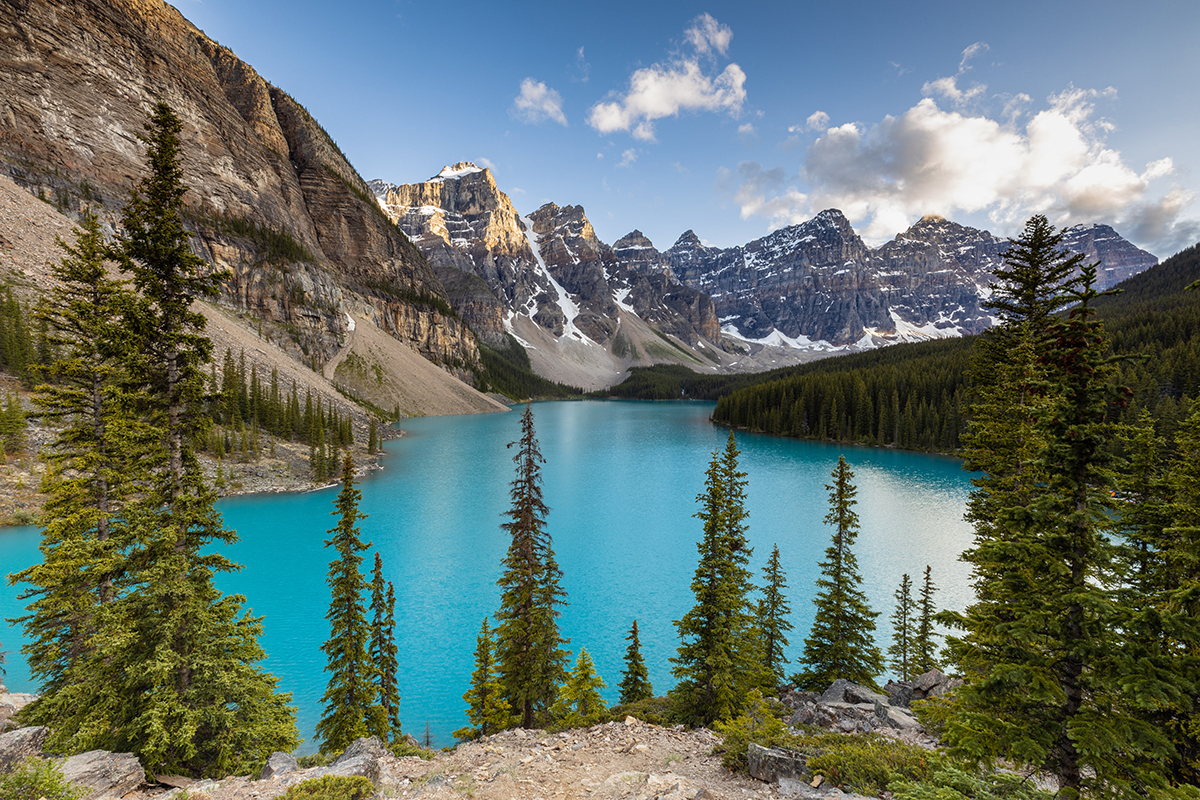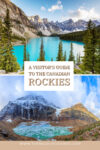For nature lovers and adventure seekers, there’s no better place to explore than the Canadian Rockies. While most travelers are familiar with Banff National Park, the Rockies cover several parks which span Alberta and British Columbia.
So, depending on your time frame, you can also explore Jasper, Yoho, and Kootenay National Parks and several provincial parks.
Why is this area worth a visit? It offers a unique mix of towering peaks, crystal-clear turquoise lakes, and gushing waterfalls. Whatever your fitness ability, you can choose from leisurely walks to challenging climbs within the parks.
The Best Time to Visit the Canadian Rockies
While the Canadian Rockies are a year-round destination, July and August provide the warmest weather and more accessible hiking trails. However, expect higher-priced hotels and crowded areas at hotspots such as Lake Louise and Moraine Lake.
You should know that many glacial lakes don’t finish melting until mid-June. So, if you want to see the turquoise hues of Lake Louise, plan to visit after the melt.
Visiting in September allows you to avoid the crowds and benefit from slightly lower prices. You could also see more wildlife sightings and witness the rutting season.
Banff in the winter provides a contrasting experience to summertime. With seasonal crowds gone, the winter wonderland allows for unique experiences. Imagine dog sledding through snow-covered trees, ice skating on Lake Louise, or riding a sleigh.
The possibilities are endless, but you’ll need to dress for -30C or colder temperatures and have an SUV with snow tires. While you’ll enjoy the parks with few people, you’ll fit less into your days due to fewer daylight hours.
Visiting Tips
To visit the Canadian Rockies, here are some tips to know before you go.
- You’ll need a Discovery Pass or Park Pass. You can purchase it online and place it on your rearview mirror. Select from a daily pass or yearly permit covering multiple parks across Canada. In most cases, the annual license saves money and covers up to seven people in one vehicle.
- In summer, hotels and car rentals sell out fast. Reserve at least nine months ahead to ensure the best selection and better rates. While you can visit the Rockies without a vehicle, a rental allows you to travel further and see more.
- You’re in bear country. Carry bear spray and a bear bell. Don’t hike alone, and obey the rules of hiking in groups if recommended on trails. On the Consolation Lakes Trail, hikers often must travel in groups of four or more.
- You’ll have spotty or no cell phone service outside of towns.
- Keep your gas tank reasonably full, as there are few gas stations within the national parks.
- Follow the ‘leave no trace’ rule so others can enjoy the pristine wilderness too.
- If you’re visiting from another country, flying into Calgary International Airport provides the closest access to the parks. With a rental vehicle, it takes 90 minutes to reach Banff on the Trans-Canada Hwy/AB-1.
Where to Stay in the Canadian Rockies
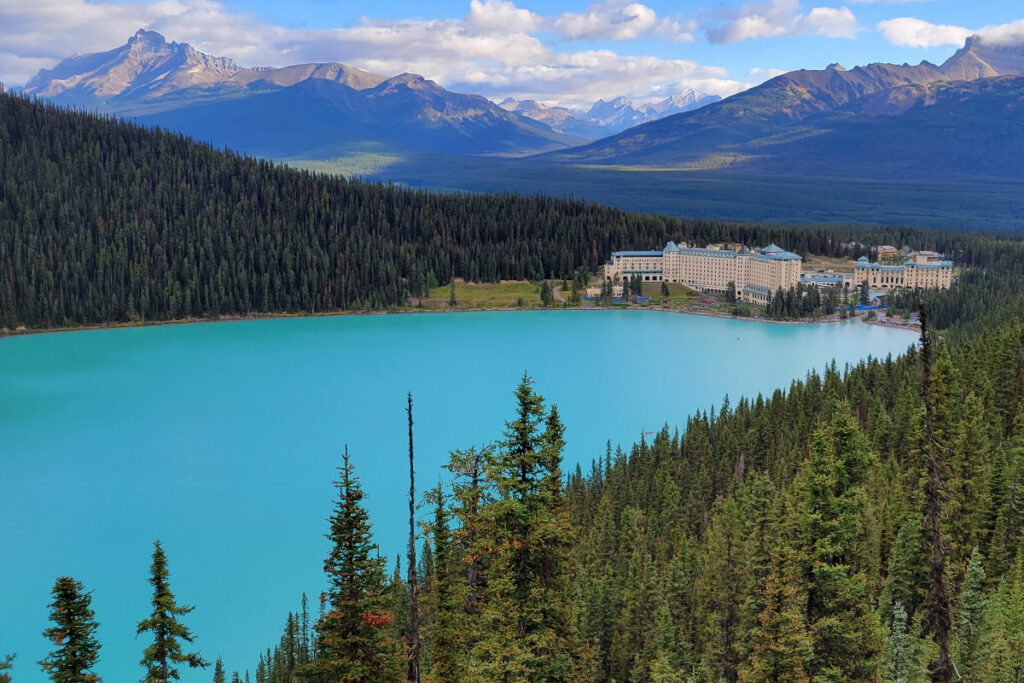
In summer, camping provides a cheaper way to stay. There are many campsites in and around Banff, with Two Jack and Tunnel Mountain offering oTENTik accommodations. These A-frame cabins sleep up to six, but you will still need camping equipment.
The Fairmont brand has three options if you want a luxury stay in the parks. In Jasper, you’ll find the Fairmont Jasper Park Lodge in a wooded area surrounded by lakes.
You can’t beat the opulent rooms of the Chateau Lake Louise or Banff Springs Hotels, both located in Banff. The Banff Springs resembles a Scottish castle near the downtown core, while the Chateau sits next to Lake Louise.
Families or groups of four might prefer the Moose Hotel and Suites in downtown Banff. Their suites are spacious and include kitchenettes and living areas with fireplaces, ideal for winter getaways. You’ll find a hot tub, heated pool, and fire pit on the roof, a big hit with its guests.
The Marmot Lodge and Jasper Inn & Suites provide budget-friendly accommodation in Jasper. Alternatively, you can stay in Hinton, 69 km east of Jasper.
While you won’t find many inexpensive options in Banff in summer, your best bets are Canalta Lodge, Brewster Mountain Lodge, or Ptarmigan Inn. If these are still outside your budget, staying in Canmore may save you 50%, but you’ll need to drive 30 minutes daily to Banff.
Tours of the Canadian Rockies
Alternatively, you can get a taste of the Canadian Rockies on an organised tour. The perk is that you won’t have to worry about the logistics. Your accommodation is included in the price of the tour and you’ll be ferried from one jaw-dropping site to the next in a comfortable coach.
The tour is a great option if you have limited time and would like to sample the highlights of the Rockies. You can either take the tour from Vancouver or from Calgary.
Things to Do in Banff National Park
Hiking
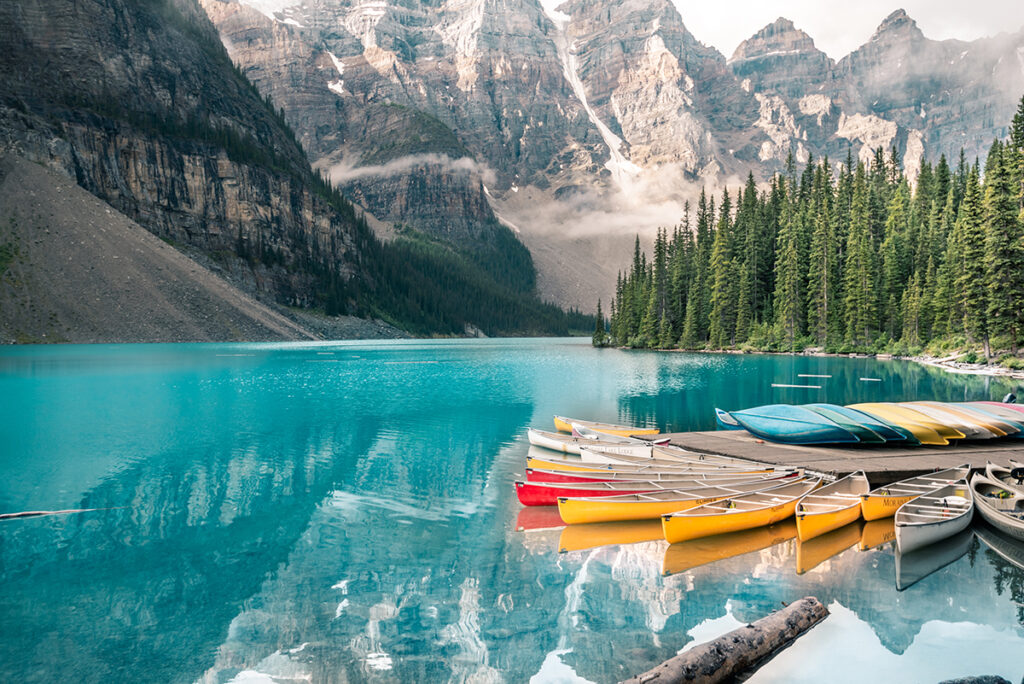
The incredible wilderness is the primary reason travellers visit Banff. You can choose from a myriad of Banff hiking trails, from easy strolls to strenuous climbs. To get the most out of the park, aim to spend around 3 days in Banff.
For beginners, the Tunnel Mountain trail offers a 3.7 km round trip trek with mild elevation gain. Johnston Canyon is another easy choice and allows you to see multiple waterfalls.
Intermediate hikers can tackle the Lake Agnes Tea House trail, a 7.2 km round trip with stunning Lake Louise views. Remember to carry cash in the summer to enjoy a well-earned cup of tea and snack at the Agnes Lake mountainous teahouse.
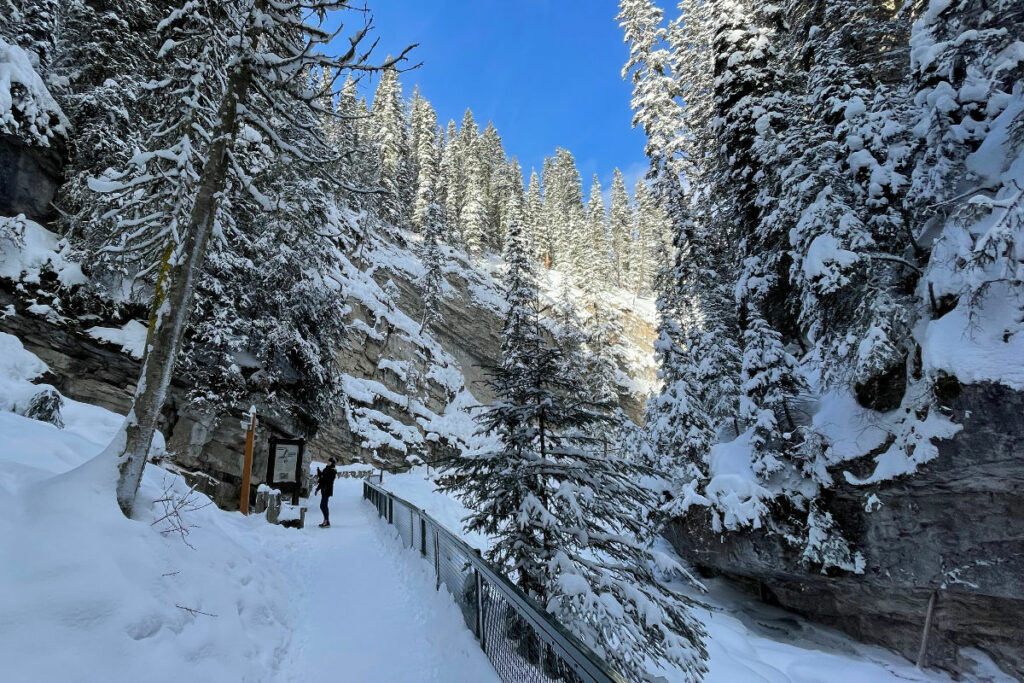
The 11 km Plain of Six Glaciers hike is demanding but rewarding and best suited to those seeking a challenge. If you’re looking for a leisurely stroll, many lakes, such as Moraine Lake and Lake Louise, have lakeside paths that are stroller-friendly.
Lake Louise and Moraine Lakes are tourist hot spots. Plan to visit early in the day to avoid the rush. Rent a canoe and enjoy a paddle if you’re not a hiker.
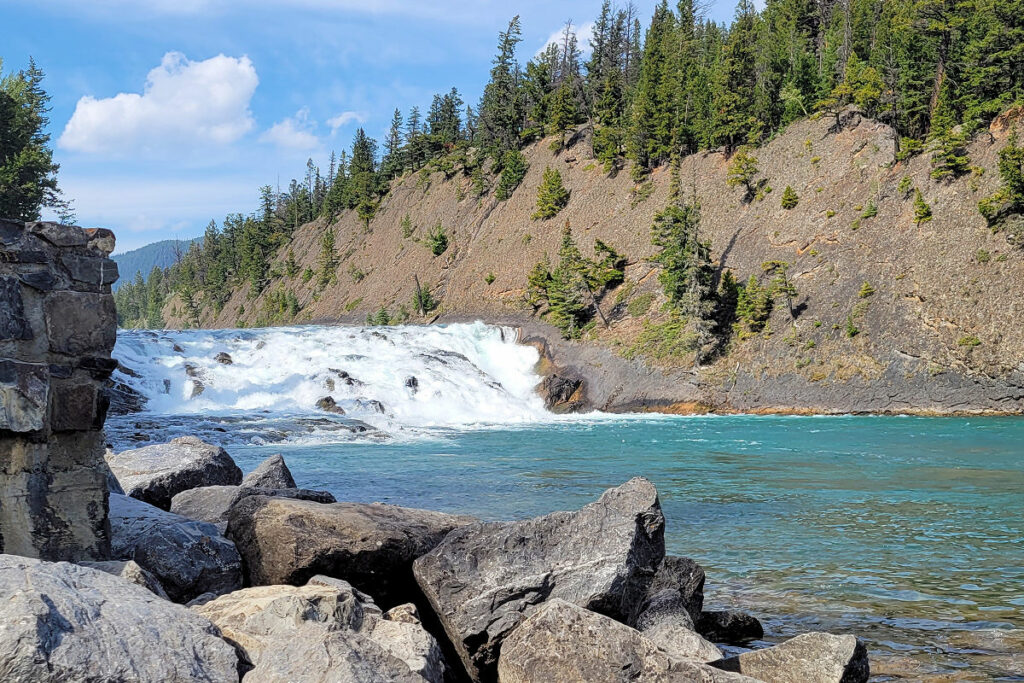
If you’re into chasing waterfalls, you’ll have many examples to choose from. Bow Falls near the Banff Springs Hotel provides a broad, high-volume example. Bow Glacier Falls requires a hike from Bow Lake, an area popular for day hikes. Undoubtedly, hiking Johnston Canyon will give you the most reward for little effort.
Gondola Rides
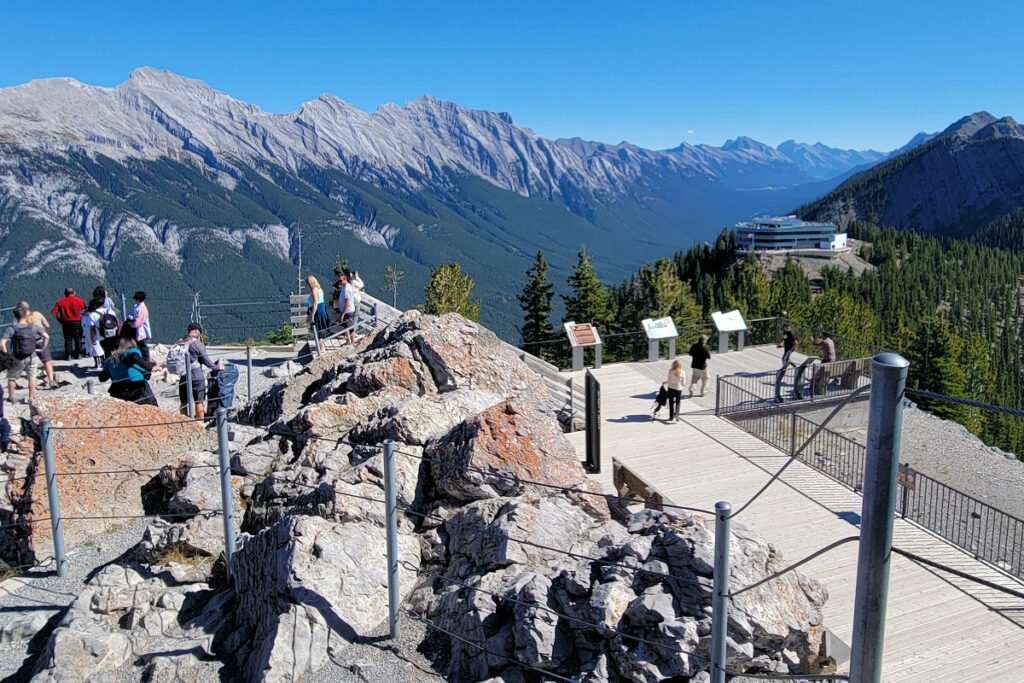
The mountain peaks provide the best views of Banff and Bow Valley. While you can hike up, Banff offers three gondola rides.
Ride the Lake Louise Sightseeing Gondola for a good chance of viewing wildlife. Grizzly bears, mountain goats, deer, elk, cougars, and other large mammals are commonly spotted during the ride. In fact, the operator has a wildlife calendar on its website, showing what was spotted each day.
Banff’s Gondola to Sulphur Mountain offers stunning 360-degree views of Banff, Bow Valley, and several mountain ranges on a clear day.
At the peak, a 1 km boardwalk meanders across the ridge, offering stunning views of Mount Rundle, the Sundance Range, Bow Valley, and Tunnel Mountain. At the end of the wooden boardwalk, you can view an old weather station, once used to track the area’s weather.
If you prefer an open chairlift experience, Mount Norquay fits the bill. The 10-minute ride provides beautiful views of Bow Valley, Mount Rundle, and Tunnel Mountain. In winter, it attracts skiers and snowboarders to enjoy its powdery slopes.
Other Things to Do Around Banff
Your Discovery Pass gives complimentary access to the Cave and Basin National Historic Site. You can explore natural thermal mineral springs and learn about their endangered species, the Banff Springs snails, who live in the thermal waters.
The site offers an interpretive centre, boardwalks, and trails. The Marsh Trail provides insight into the marsh area, an oasis for wildlife, especially in winter.
Outside Canmore, the Yamnuska Wolfdog Sanctuary offers an educational and informational program. You can select from three tours to learn about wolfdogs at this wildlife rescue. This is not a breeding facility or a zoo; it’s a refuge for wolfdogs that would otherwise be euthanized.
Things to Do in Kootenay National Park
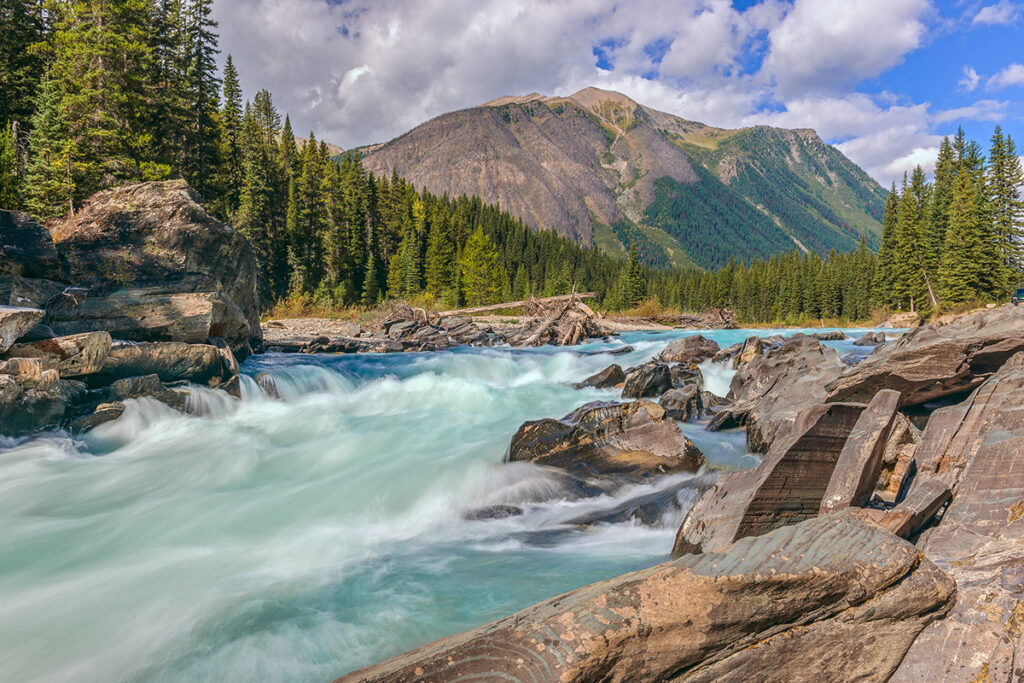
Kootenay may be the least visited national park in the Canadian Rockies. However, it has its own appeal, especially for those seeking a less travelled area.
Located in British Columbia, the park encompasses 1,406 square kilometres. While Kootenay National Park has no hotels, you can camp at Marble Canyon, Redstreak, or McLeod Meadows. Alternatively, you can explore the park on a day trip from Banff.
Top things to do in Kootenay National Park include:
- Visiting the Continental Divide.
- Hiking the Paint Pots trail.
- Exploring Marble Canyon.
- Visiting nearby Radium Hot Springs.
For avid hikers, check out Stanley Glacier and Floe Lake trails. In winter, the park is excellent for snowshoeing and cross-country skiing.
Things to Do in Yoho National Park
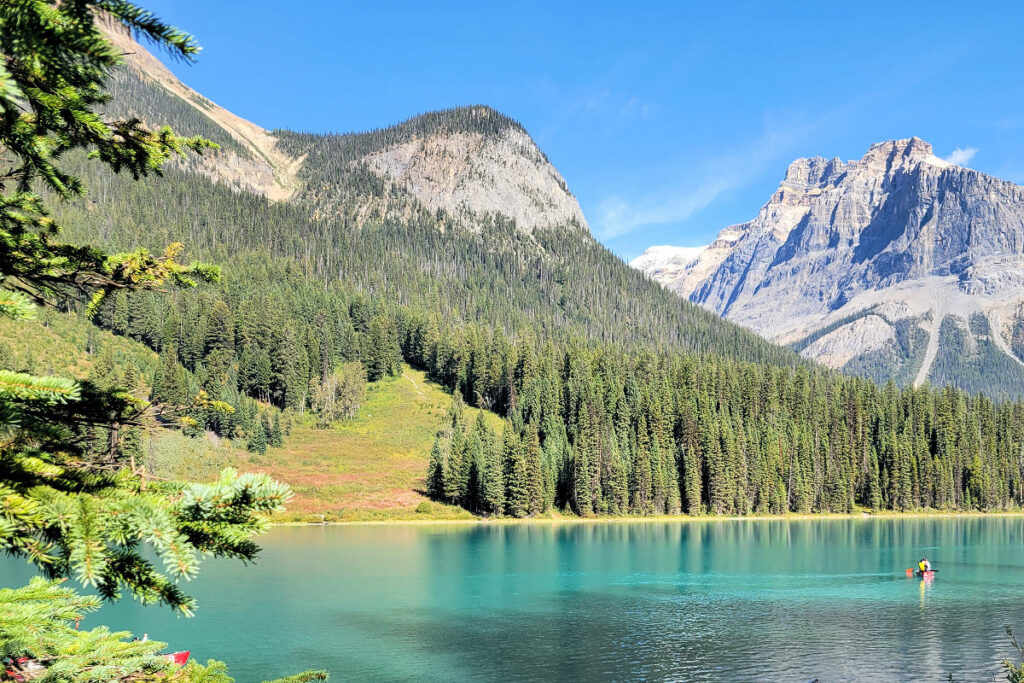
Yoho National Park is another option to visit on a day trip. However, you can also stay at Emerald Lake Lodge, located on the lake with the same name.
Experienced hikers prefer Yoho for its overnight hikes around Lake O’Hara, an area of extreme natural beauty. To get there, you need a reservation for the bus from Lake O’Hara Parking Lot. Buses run from June to October.
Of the multiple hiking trails, the Alpine Circuit is popular for its panoramic views. With an 11 km distance and almost 900 m elevation gain, it’s reserved for experienced trekkers.
Day hikes like Lake McArthur are possible, but overnight stays at campsites or the Lake O’Hara Lodge offer a fuller experience.
The Natural Bridge, Spiral Tunnel Viewpoint, and Takakkaw Falls are good alternatives if you prefer to forego hiking. You should note that the road to Takakkaw Falls is unsuitable for RVs or large vehicles. Its switchback turns are very tight and only manageable in smaller cars.
It’s a short walk from the parking lot to the base of the falls. At 373 m tall, you’ll enjoy Canada’s second-tallest waterfall. If you visit the Canadian Rockies in the off-season, you will not have access to Takakkaw Falls. Due to heavy snowfall, the road opens from late June to mid-October.
Things to Do in Jasper National Park
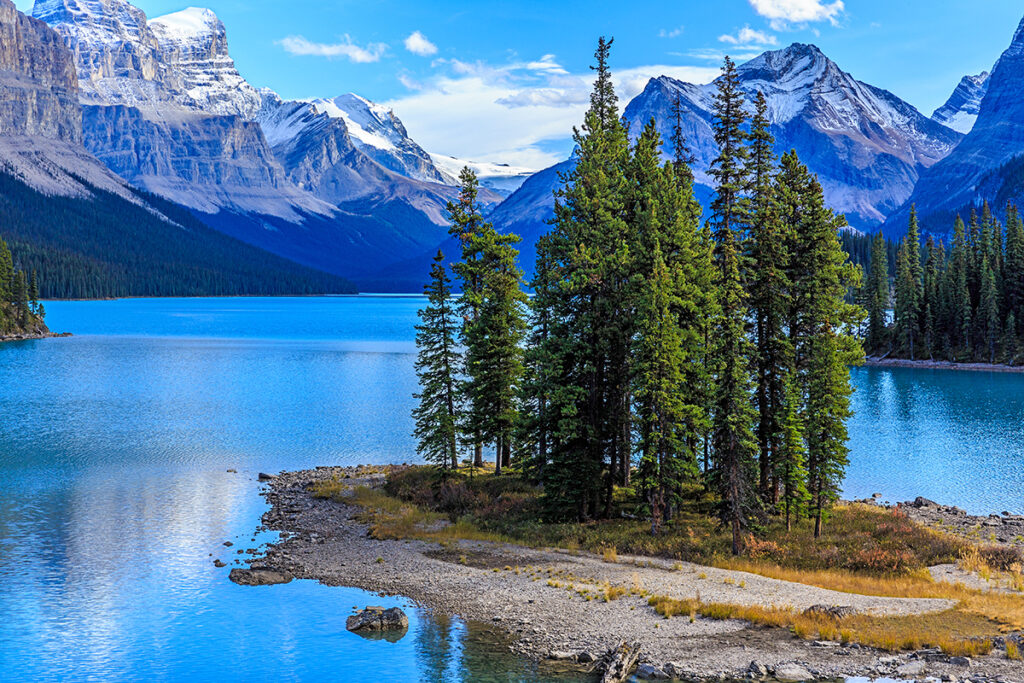
To the north of Banff, Jasper National Park sees fewer tourists, but its scenery, canyons, and waterfalls are just as spectacular. You can also enjoy some great hikes in Jasper.
It takes almost 3-1/2 hours to drive on the Icefields Parkway, rated as one of the most scenic drives worldwide. While the route offers many fantastic stopping points, the Columbia Icefields Discovery Centre is a must for anyone driving between the national parks.
Columbia Icefields Discovery Centre
The Columbia Icefields Centre is a hub for glacier exploration in Alberta, Canada. You can purchase a ticket on an Explorer bus to venture onto the glacier. The big-wheeled buses provide an exhilarating adventure and one you won’t soon forget.
On the glacier, you can hop off the bus and walk across the frozen landscape within a marked area. If you bring an empty bottle, you can also sample glacial water from a glacial stream. Remember to bundle up because even in summer, you’ll experience frigid temperatures.
Your ticket includes a visit to the Skywalk further down the highway. Not for the faint of heart, the Skywalk allows you to walk a glass floor 280 m above the canyon.
Athabasca and Sunwapta Falls
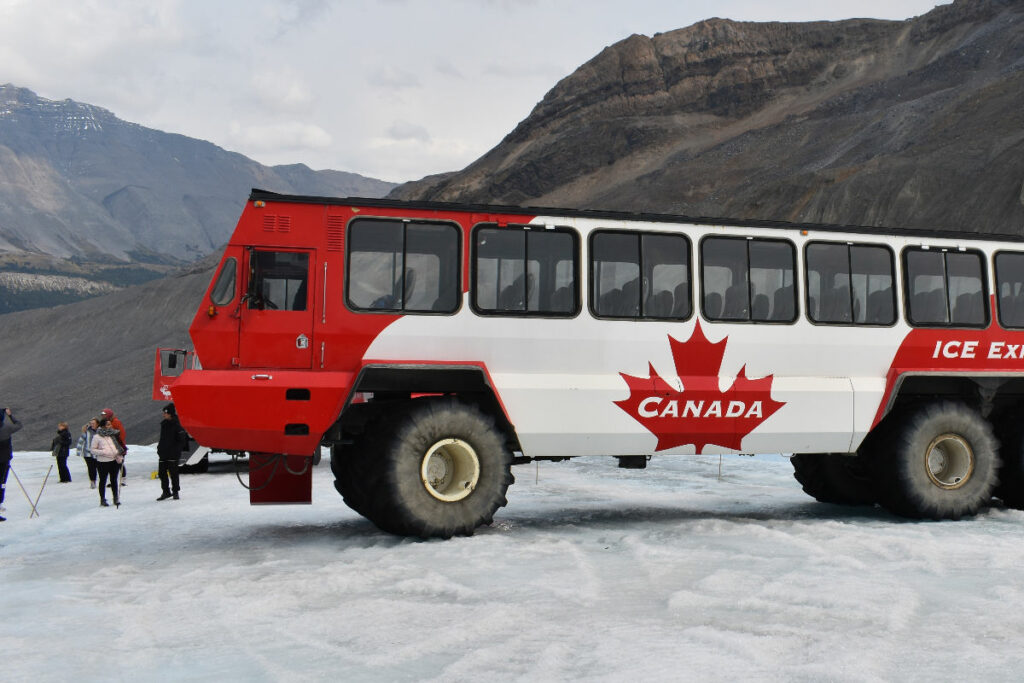
Athabasca and Sunwapta Falls are must-visit spots along the Icefields Parkway. The larger of the two waterfalls, Athabasca impresses with its powerful water flow and walk through an ancient canyon.
Sunwapta is known for its picturesque cascade, with a small island positioned before the falls. A bridge provides excellent viewing opportunities, and short trails offer varying vantage points.
Due to the dangerous nature of these waterfalls, it’s essential to stay on the trails and not venture near the edge. Another option is to visit Athabasca Glacier and Columbia Icefield Parkway on a tour from Banff.
Edith Cavell
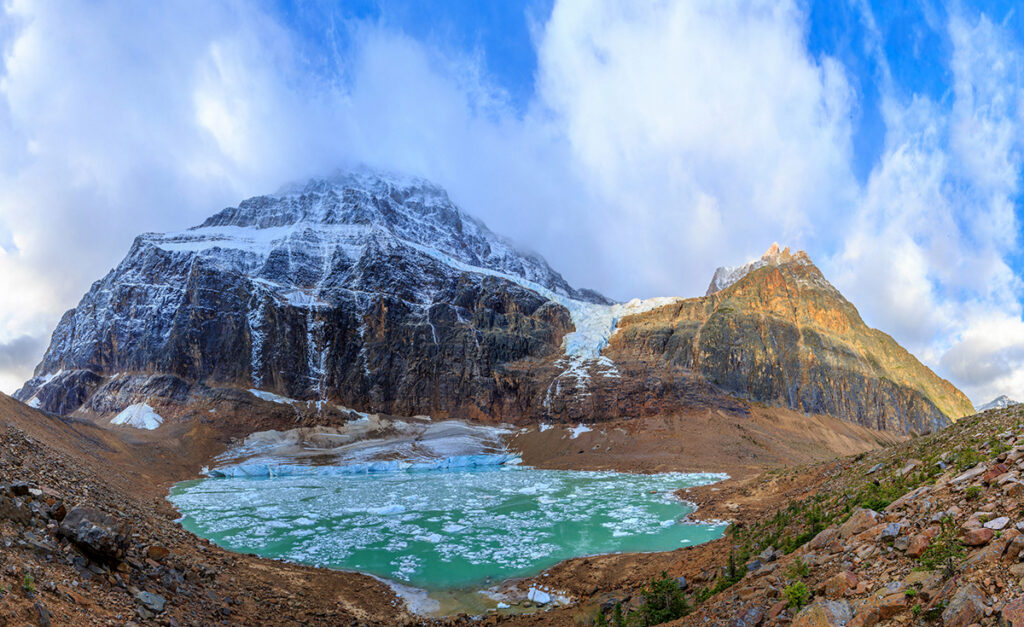
My favorite place in Jasper, Edith Cavell, allows you to see giant icebergs on a lake, even when it’s 30C. Access to the area is only possible during summer, as heavy snow blocks the road the rest of the year.
You have several options for viewing Angel Glacier and Cavell Pond. The Path of the Glacier Trail offers a shorter hike and takes you to the mountain’s base.
However, the Edith Cavell Meadows hike requires a more strenuous climb. In summer, you’ll enjoy the meadows in full bloom and aerial views of Angel Glacier. Once the shape of an angel, the receding icefield looks less like a heavenly body today.
If you plan to hike at the beginning or end of the season, you may need crampons and hiking poles, as the higher elevations will have snow.
Maligne Lake
The drive to Maligne Lake offers an excellent opportunity to see wildlife. In fact, it’s rare to make the journey without seeing a bear, deer, or elk. So, drive slowly, keep your eyes peeled, and savour the tranquil views.
Before you reach Maligne Lake, you’ll pass Medicine Lake. Fed by underwater rivers, the lake may look full or empty, revealing its mud flats.
In 2015, a fire burned in this area, and you’ll notice the devastation surrounding the lake. The landscape has been slow to recover with a short growing season in the mountains.
At Maligne Lake, you can choose to do more hiking. The lakeside trail offers a gentle stroll, while the Opal Hills provide a more challenging trek.
Many people travel to Maligne Lake to enjoy a cruise on the water. The cruise offers a different perspective of the area and the chance to see Spirit Island.
Back in the parking area, stop by The View Restaurant for a fantastic lakeside meal. Rated as one of Jasper’s best restaurants, you’ll have vegan and gluten-free options for those with dietary restrictions.
Maligne Canyon
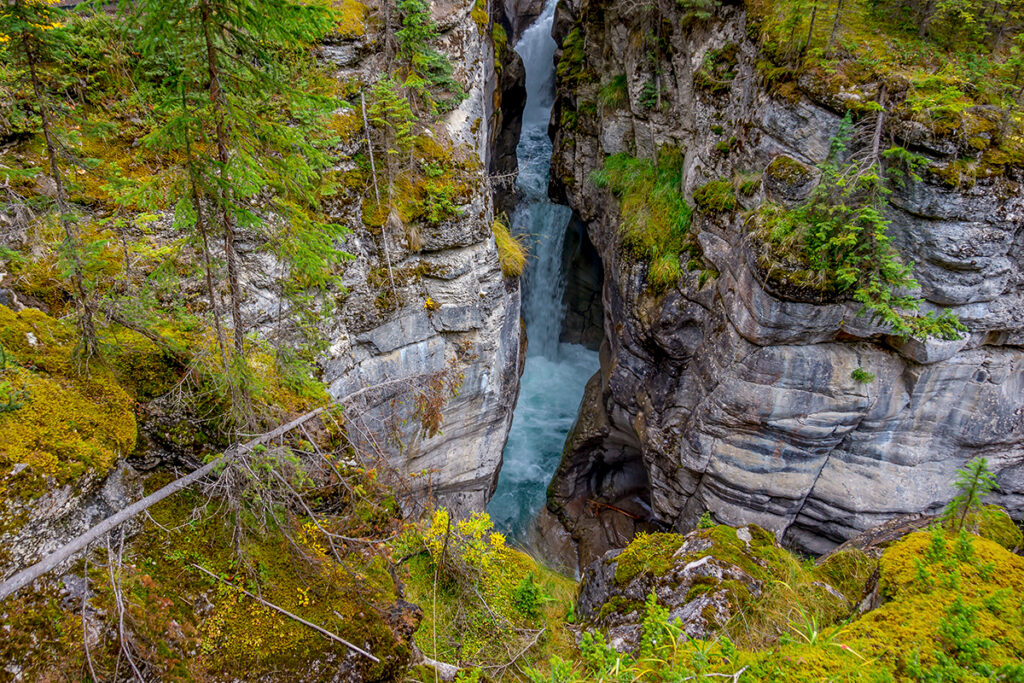
Maligne Canyon might be considered Jasper’s version of Banff’s Johnston Canyon. While it doesn’t have as many viewable waterfalls, you have options to do a short, longer, or lengthier hike.
With three parking areas, starting at the bottom provides an uphill hike at the beginning and a leisurely trek back. The upper parking lot is the largest and most popular area to start.
The canyon has six bridges offering varying vantage points. At the top, it’s difficult to see the canyon’s bottom. But, as you walk down, the canyon becomes shallower, allowing for views of the water below.
Allow 20 minutes to walk to bridges 1 and 2, one hour for four bridges, and three hours to see all six.
Where to See Wildlife in the Canadian Rockies
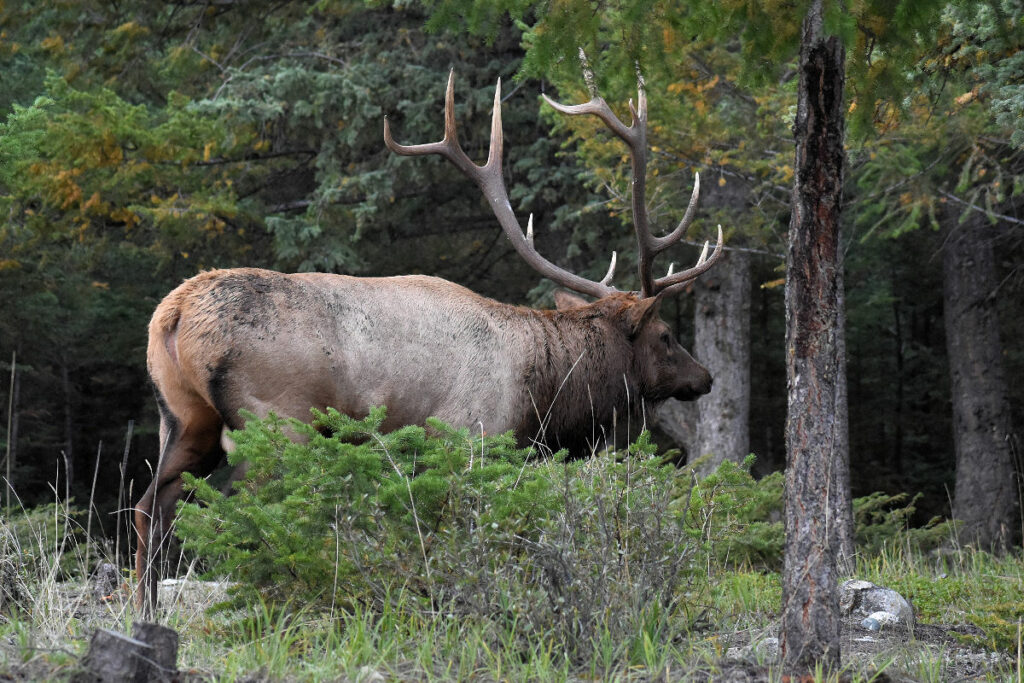
Banff National Park offers wildlife viewing opportunities outside the wildlife fencing along the Bow Valley Parkway. Here, you can see elk, deer, and black bears. Visit early in the morning or late evening to increase your chances of seeing something.
To up your chances of spotting wildlife, join a wildlife viewing tour. In Banff, you can join a small group afternoon wildlife tour. And in Jasper, you can take a morning wildlife tour, an evening wildlife tour or a special winter wildlife tour.
Elk are prevalent around the Banff Golf Course in the spring and fall. The meandering road through the course provides a nice drive, even if you see no wildlife.
Grizzly bears frequent the trail to Consolation Lakes. While you’ll want to avoid a close encounter experience, Parks Canada often recommends hikers travel in groups of four or more.
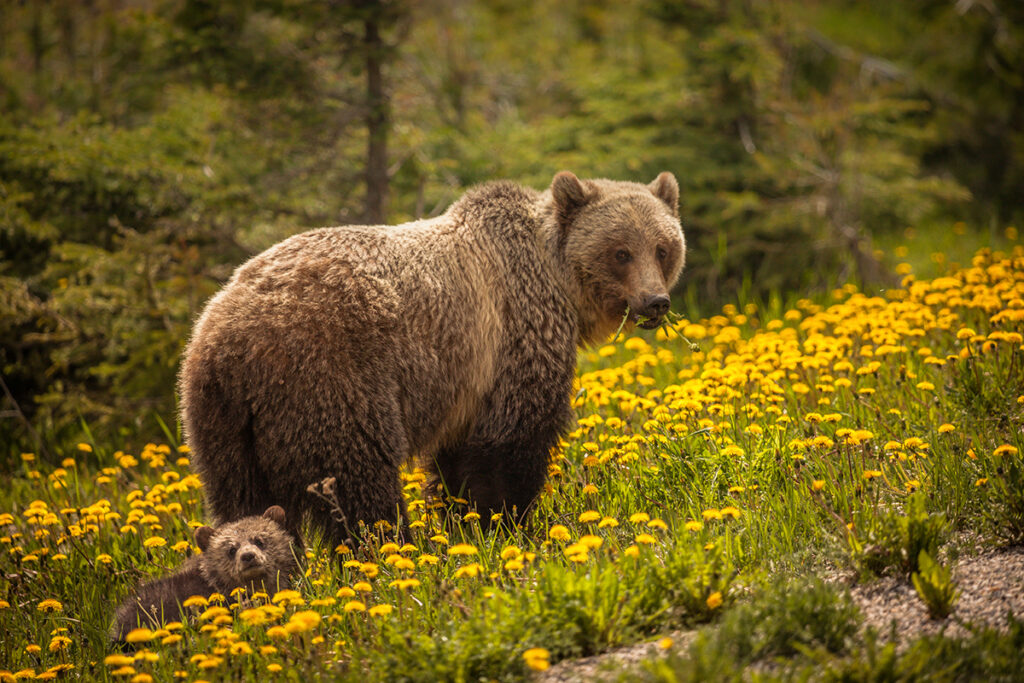
The rock pile at Moraine Lake is a haven for smaller creatures like pikas and marmots. Marmots often lay on the rocks to enjoy the midday sun.
Further north, Jasper National Park doesn’t have highway fencing, so you’re more likely to see elk on the roadside. Driving east of Jasper towards Hinton, a section of the highway is a hot spot for Bighorn sheep. Here, they often create traffic jams as they scatter across the road.
You’ll likely see elk and moose around Maligne Lake. Hike the trail to Moose Lake to increase your chances of seeing moose. Alternatively, a hike to Tonquin Valley could offer caribou sightings.
Edith Cavell Meadows provides another area to see caribou. Since caribou are endangered, dogs are forbidden on this trail.
If you’re camping in Wapiti or Whistlers Campgrounds, elk frequent these areas as they migrate through the valley daily.
Yoho National Park is less crowded. It’s ideal for spotting mountain goats on the rocky slopes. Keep an eye out for pikas and marmots as well.
Kootenay National Park offers diverse habitats. Radium Hot Springs area is known for bighorn sheep. The Kootenay Valley has elk, moose, and bears.
Visitors Guide to the Canadian Rockies Conclusion
As you can see, the Canadian Rockies encompasses a vast area, with plenty of things to do. Your only limitation is time and budget.
Whether you’re hiking, wildlife spotting, or just relaxing, it’s a must-visit destination. The experience will leave you rejuvenated and yearning for more.
About the Author
Karen is an avid traveler and full-time blogger who loves to cruise and explore new places. You can find more of her content on Forever Karen.

